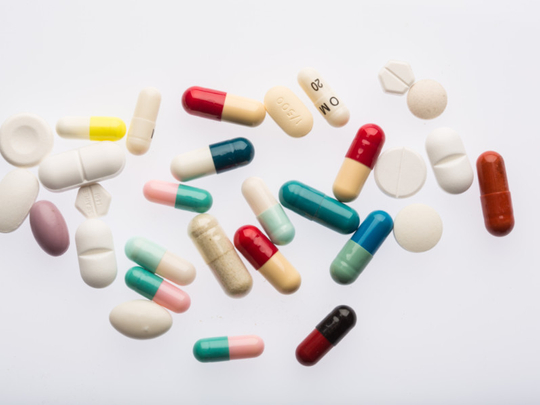
Dubai: At the recently concluded Emirates Intellectual Property Association (EIPA) conference on combating intellectual property crimes, Ebrahim Behzad, Head of Intellectual Property Rights (IPR) division at the Department of Economic Development (DED) said that consumers play a big role in the fight against this problem. “If [consumers] don’t buy them, it won’t be a lucrative business for counterfeiters.”
Opting to buy faux goods has a vast array of consequences that hurt the economy, cost people jobs and can cause harmful effects to the people who buy them, says the National Crime Prevention Council in the United States.
“Fake consumer goods do a lot of harm. While some offer purchasers lower prices than they might pay for an original, the counterfeit goods are usually of poor quality,” said the consumer organization on its website .
Counterfeiting efforts “cost people their jobs when sales of the originals are diminished by unfair competition; undermine economic growth; tarnish the reputation of the original brand; and have the potential for causing sickness, injury, and even death,” said the council.
The council advised consumers to “be savvy when purchasing goods, especially when the prices are steeply discounted. They will be protecting themselves from purchasing a shoddy product that may also be unsafe.”
The council offers these tips to avoid buying fake good:
• Examine the product carefully for signs of bad construction or design
• Look closely at the logo
• Try the product out, especially if it is an electronic good
• Ask where the product came from
• Ask who the seller is sharing the profit with
• Ask about any warranty or guarantee
BOX 1
Dangers of Fake Goods
Drugs
Global Pfizer Security says that “Counterfeit drugs are dangerous by their very nature – they are not produced under safe manufacturing conditions and they are not inspected by regulatory authorities. Therefore, it is impossible for consumers to know what ingredients these products actually contain.
Toys
Knock-off children’s toys are dangerous because they can have toxic chemicals on them given there are no stringent protection laws to test the products before rolling them into the market, say experts.
Car parts
Use of fake spare parts and poor quality tyres not only cause damage to the vehicles, but more alarmingly, endanger lives of road users, an auto expert told Gulf News.
In most cases, motorists chose poor quality parts for their affordability, but according to Gordon Ferguson, General Manager at AAA Service Centre, they risk damaging their vehicles apart from risking their lives
In fact, he added, that in the longer run people end up spending more on repair required by premature failure cause by counterfeit parts.
“Fake parts could cause other parts to fail, could put lives at risk, endanger the users and other road users as well as reducing the life of the car,” said Ferguson.
Auto spare parts can classified into different categories and it is not a simple choice between original or fake.
“There are lots of fake parts around but there are a lot of different types of parts that one needs to be aware of, for example, there are genuine parts which are sold by the vehicle manufacturer, then you have OEM (Original Equipment Manufacturer) parts, which means that the manufacturers of these parts supply the parts to the car maker, then you have branded parts then you have fake parts,” he said.
Urging consumers to go for original, OEM or branded parts, he called on motorists to seek advice from either a qualified mechanic or from service centres.
Tyres are as important to the vehicles as any other mechanical part, if not more, and compromising on their quality could lead to grave consequences. More so under the prevalent UAE weather conditions.
“Fake tyres are not really an issue here, the issue is cheap quality tyres and old tyres. Cheap quality tyres do not have the temperature rating, (which is important under the UAE weather conditions),” said Ferguson.
According to the UAE regulations, all tyres need to have a manufacturing date stamped on them, apart from the temperature ratings.
“In the UAE, tyres that are more than five years old, whether used or unused, are considered out of date. In Europe this is not an issue but the extreme heat here and ultraviolet rays damage the tyres and cause cracks on the tread/sidewall which in turn cause blow outs,” he added.
He advised consumers to go for good branded tyres.
“Consumers should never look at cheap alternatives. If you have a branded tyre for Dh1500 or Dh1300 and a cheap alternative for 500dhs, you should go for the branded because, one cannot expect to get the same life, performance, quality or safety from the cheap tyre,” he said.
Fake automobile parts are extremely dangerous given that are not tested and are made by shoddy manufacturers who are not required to meet standards, says the Global Intellectual Property Centre.
Electrical products
Cheap electrical items such as hoverboards, fuses, lights and electrical extension cords made in substandard factories can pose great dangers to buyers. Items can explode or catch fire due to faulty wires or cheap batteries, according to media reports.
Designer goods
“Other commonly faked consumer goods include clothes, watches, jewellery,” says the National Crime Prevention Council in the United States, which can be dangerous to users because “shoddy construction and finishes may make them a danger.”
Box 2
By the numbers
• Global imports of counterfeit and pirated goods are worth nearly half a trillion dollars a year, or around 2.5% of global imports.
• The total value of imported fake goods worldwide was $461 billion in 2013 (total imports in world trade of $17.9 trillion).
• Up to 5 per cent of goods imported into the European Union are fakes.
• US, Italian and French brands the hardest hit.
• In many cases, the proceeds of counterfeit trade go towards organised crime.
• Most fake goods originate in middle income or emerging countries, with China the top producer.
• Postal parcels are the top method of shipping bogus goods, accounting for 62 per cent of seizures over 2011-13.
Source: Trade in Counterfeit and Pirated Goods 2016, Organisation for Economic Co-operation and Development (OECD)











